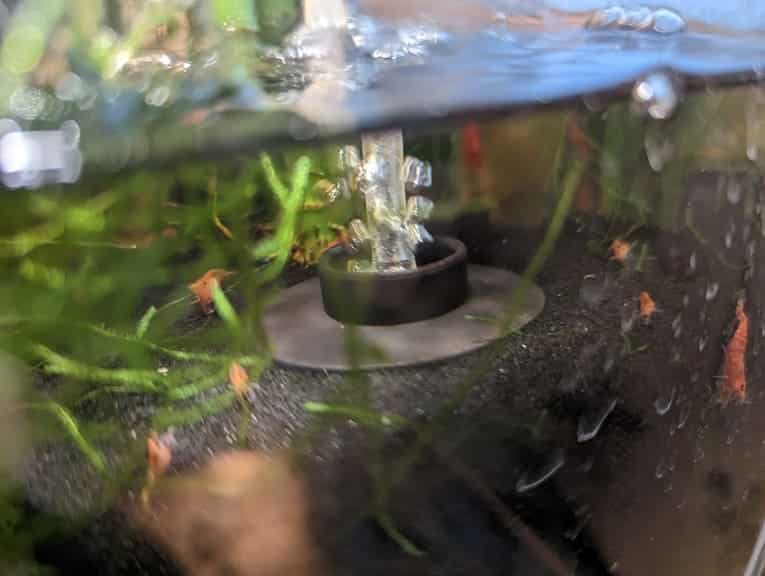If you are new to the aquarium hobby, then you may notice that your fish tank will lose water over time. To see how you can stop this from happening so that you don’t have to constantly refill your tank, you can take a look at this article from Aquarium Blueprints.
1. For the first step, we recommend taking a look at the output nozzle or opening from your canister or hang-on-back power filter if you have one of these products installed. You need to make sure that water isn’t splashing out of the tank.
If you see some droplets getting out, then you can either try to reposition to the output or lowering the flow rate.
2. If you have an air stone installed, then you should also make sure that it isn’t causing water to splash outside of the tank.
If you see that it is sending water out, then you can try decreasing the air flow and or re-positioning the stone.
3. You can also try lowering the water surface in your tank. By moving the top of the water line to several inches below the top of your fish tank, you should prevent water from splashing out in a vast majority of scenarios.

4. Warmer water will evaporate faster when compared to colder temperatures. Therefore, you can try lowering the temp in your aquarium.
With that said, make sure that your fish and other aquatic pets are able to handle the colder environment before you do any adjusting.

5. You should also check to see if there are any leaks from your tank and/or filter. If there are, then make sure you get them fix as soon as possible as the leaks will most likely lead to a complete burst if you don’t address the issue in a timely manner.
6. Another way to prevent evaporation is by putting a top cover in your tank. By doing so, you will trap the evaporation, which will eventually accumulate the moisture that will drop back down into your tank.
A top cover will also help with preventing water from splashing out of your tank as well as providing the following benefits:
- Keep fish and other pets from jumping or escaping the tank.
- Prevent insects from getting inside the tank.
- Prevent any potentially harmful chemical from getting into the water column.
- Keep the temperature in your tank water more consistently warm.
